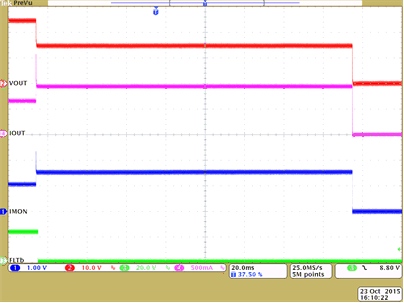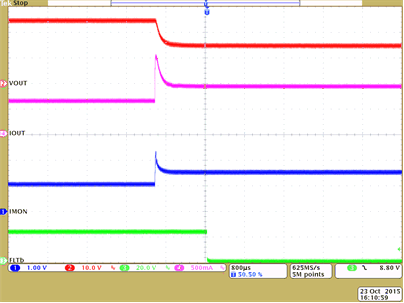JAJSCF6G July 2016 – December 2019 TPS2660
PRODUCTION DATA.
- 1 特長
- 2 アプリケーション
- 3 概要
- 4 改訂履歴
- 5 概要(続き)
- 6 Device Comparison Table
- 7 Pin Configuration and Functions
- 8 Specifications
- 9 Parameter Measurement Information
-
10Detailed Description
- 10.1 Overview
- 10.2 Functional Block Diagram
- 10.3
Feature Description
- 10.3.1 Undervoltage Lockout (UVLO)
- 10.3.2 Overvoltage Protection (OVP)
- 10.3.3 Reverse Input Supply Protection
- 10.3.4 Hot Plug-In and In-Rush Current Control
- 10.3.5 Overload and Short Circuit Protection
- 10.4 Device Functional Modes
-
11Application and Implementation
- 11.1 Application Information
- 11.2
Typical Application
- 11.2.1 Design Requirements
- 11.2.2 Detailed Design Procedure
- 11.2.3 Application Curves
- 11.3 System Examples
- 11.4 Do's and Don'ts
- 12Power Supply Recommendations
- 13Layout
- 14デバイスおよびドキュメントのサポート
- 15メカニカル、パッケージ、および注文情報
パッケージ・オプション
デバイスごとのパッケージ図は、PDF版データシートをご参照ください。
メカニカル・データ(パッケージ|ピン)
- RHF|24
- PWP|16
サーマルパッド・メカニカル・データ
- PWP|16
発注情報
10.3.5.3.1 Look Ahead Overload Current Fault Indicator
With the device configured in current limit operation and when the overload condition exists for more than tPGOODF, 875 µs (typical), the FLT asserts to warn of impending turnoff of the internal FETs due to the subsequent thermal shutdown event. Figure 46 and Figure 47 depict this behavior. The FLT signal remains asserted until the fault condition is removed and the device resumes normal operation.

| RILIM = 12 kΩ | MODE pin connected to RTN | Load transient event from 37 Ω to 15 Ω |

| RILIM = 12 kΩ | MODE pin connected to RTN | Load transient event from 37 Ω to 15 Ω |